Mikoyan, the visionary designer, has truly crafted an unparalleled fighter that captivates the imagination, and its illustrious legacy endures with the introduction of the new MiG-35 MRCA, further cementing its reputation as an indomitable force in the skies.
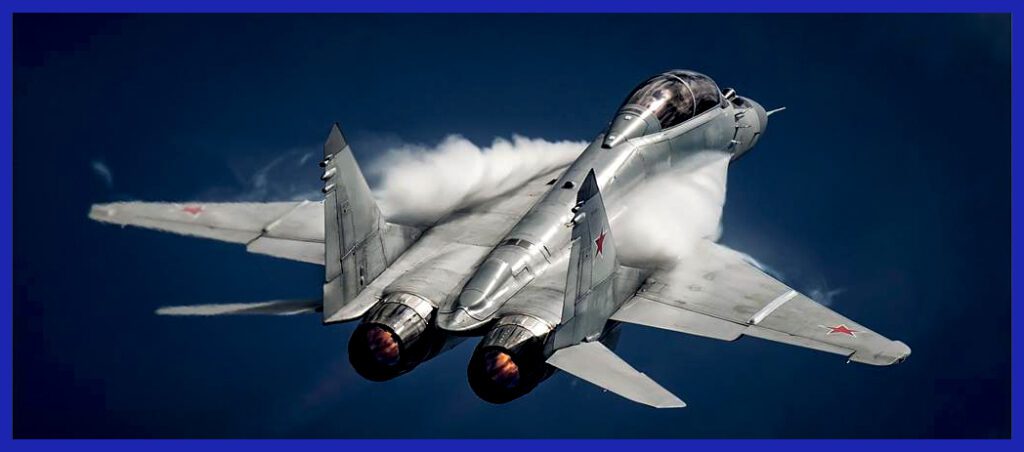
Due to the initial lack of recognition and acknowledgement of the pre-production MiG-29 A in the Western hemisphere, the new fighter was ultimately bestowed with the formidable NATO reporting name “Fulcrum-A.” It is worth noting that while numerous Soviet aircraft were assigned distinctive and catchy nicknames, only a select few were granted official designations. Interestingly enough, it was observed that certain Soviet pilots interpreted the NATO reporting name “Fulcrum” as a complimentary portrayal of the aircraft’s intended role, and as a result, it is occasionally employed informally within the Russian service.
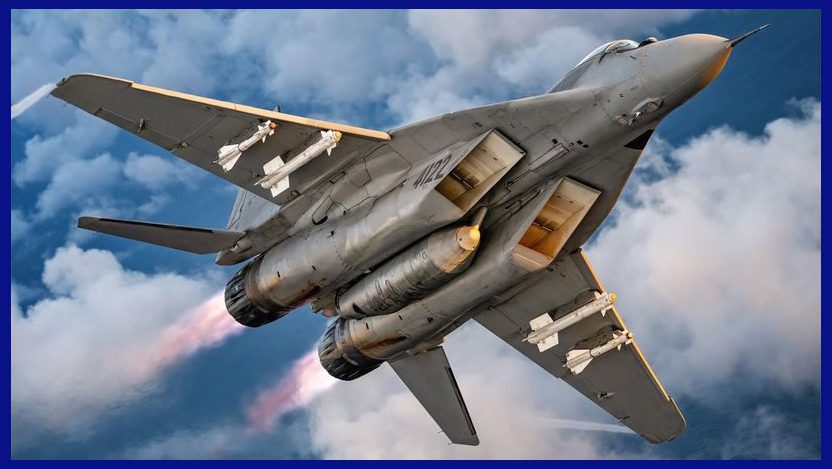
About MiG-29 Fulcrum History
To prevent the likelihood of a new American fighter having a significant technological advantage over already-existing Soviet fighters at the height of the Cold War, a Soviet counter was required. A new air superiority fighter’s development thus became of greater importance. An Advanced Frontline Fighter was needed, according to a 1969 order from the Soviet General Staff.
Long range, good short-field performance (including the ability to use narrow runways), exceptional agility, Mach 2+ speed, and heavy armament were all included as part of the exceedingly ambitious requirements. Along with the MiG design bureau, the Soviet aerodynamics institute TsAGI worked on the aircraft’s aerodynamics.
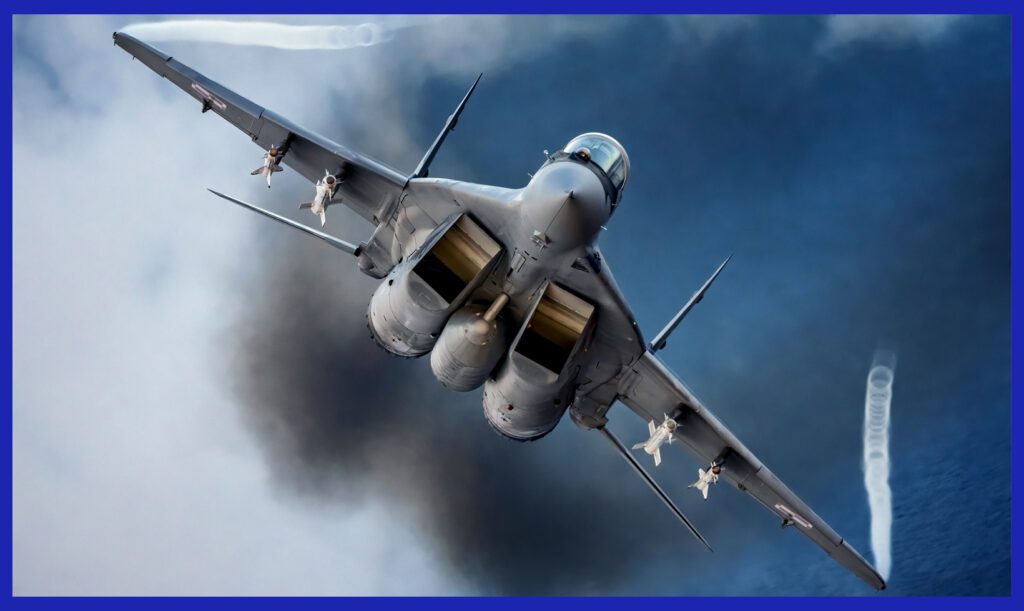
Hence a lightweight air defence fighter was developed as MiG 29 in the mid-1970s and the first prototype flew on 6 October 1977. Production models entered service in 1983. The aircraft has a virtual-delta wing with large forward fairings, twin fins and prominent air intakes for the twin RD-33 turbofans. It has an all-moving tailplane and, in early models, additional ventral fins. Most MiG 29 do not have fly-by-wire controls, unlike their Western contemporaries. The armament is carried on Six underwings and one centreline pylon. Variants include the MiG 29A and B export models for many countries including India, Bulgaria, Bangladesh, Czechoslovakia, Cuba, Iran, Iraq, Poland, and North Korea.
Interestingly the USA also acquired 21 MiG-29s in 1997 from Moldova after Iran had expressed interest in the high-performance fighters. In a unique accord between the USA and Moldova, the aircraft was shipped to the USA to prevent them from being acquired by rogue states.
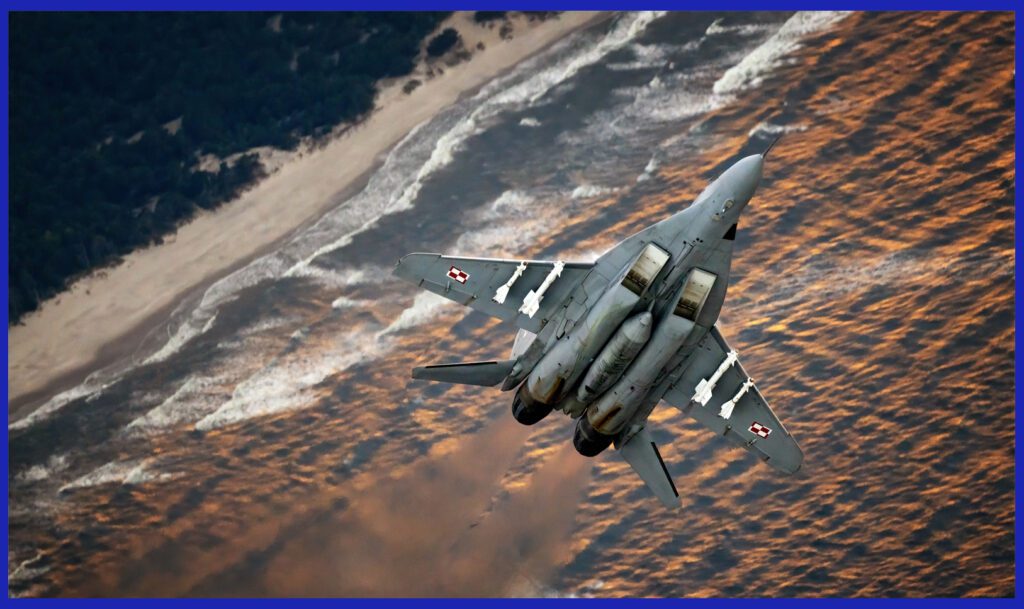
The radar can track ten targets up to 245 km / 152 miles away and enables look-down-shoot-down capability, while the pilot’s helmet-mounted sight allows him to direct air-to-air missiles wherever the pilot looks. The MiG is also designed for rogue-field operations- special doors seal off the main air intakes to prevent foreign object ingestion during startup and taxiing. Air is drawn in via louvres in the wing roots instead and as the aircraft takes off the inlet doors open.
The Russian Air Force has upgraded some MiG-29s to MiG-29SMT standard by increasing the range and payload, new computer screens replacing cockpit instruments, as well as improved radar and inflight refuelling capability.
Daimler Chrysler Aerospace modified a number of Polish MiGs for NATO compatibility after the nation joined NATO in 1999, having already modified East German MiG-29s after German reunification in 1990. A navalized version, the MiG-29K, was developed and is in service with the Indian and Russian Navies.
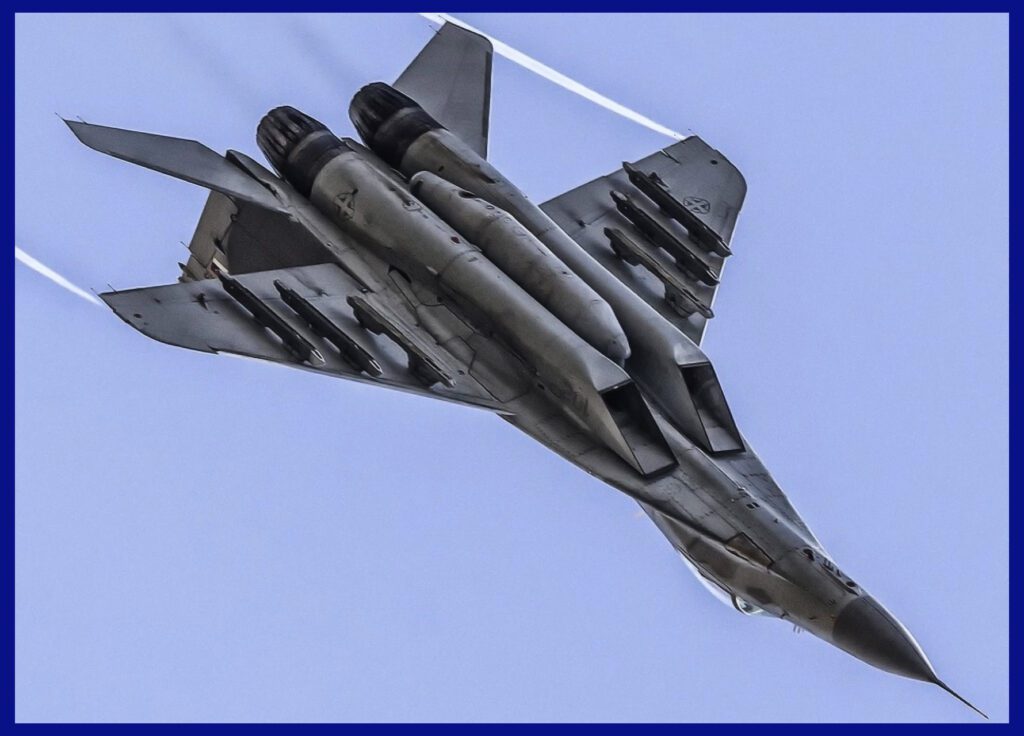
The improved MiG 29C and MiG 29S with raised fuselage line containing additional fuel and ECM equipment, the MiG 29M with a lightened airframe and additional fuel, The Naval variant ‘K’ with folding outer wings and eight wing pylons, and the MiG-29SMT which is an upgraded version with a large conformal fuel tank on the upper fuselage and RD-43 engines. An even more advanced version, based on the MiG-29K and designated MRCA, was unveiled in late 2001.
Over 1,500 MiG-29s have been manufactured by MiG-MAPO. Out of that total, 460 were utilized by the Russian service, while the majority of the production has been dedicated to export customers. Presently, approximately 22 non-Russian countries operate this aircraft. Notably, India became the first international customer of the MiG-29 in 1980.
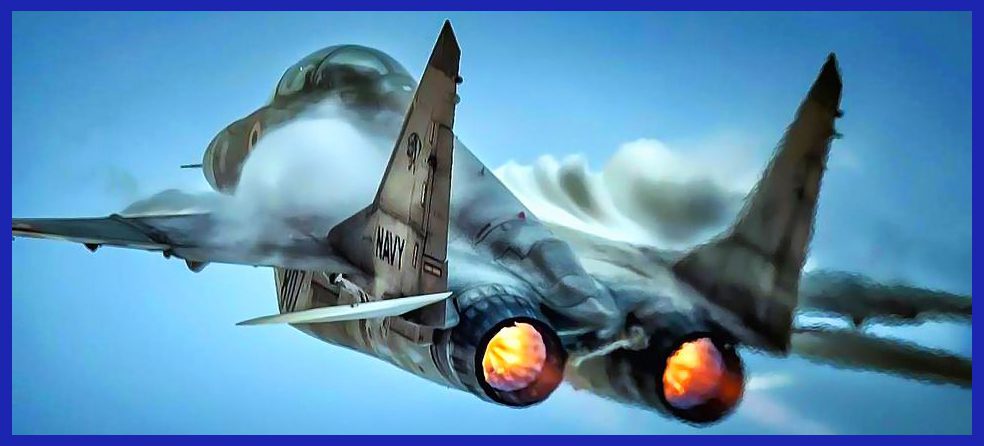
The Design Analysis Of The MiG-29
The design analysis of the MiG-29 reveals a masterpiece of engineering, combining elegance and functionality in a single awe-inspiring package. From its sleek aerodynamic contours to its carefully crafted lines, every aspect of the aircraft exudes a sense of purpose and efficiency.
With its origins rooted in the original PFI requirements issued by TsAGI, the MiG-29 shares broad aerodynamic similarities with the Sukhoi Su-27, although it boasts notable differences. The aircraft features a mid-mounted swept wing with blended leading-edge root extensions (LERXs), which are swept at approximately 40°. Additionally, the MiG-29 is equipped with swept tailplanes and two vertical fins, positioned on booms located outboard of the engines. Leading-edge automatic slats, comprising four segments on early models and five segments on certain later variants, are affixed to the wings. The trailing edge is equipped with manoeuvring flaps and wingtip ailerons.

The MiG-29 is equipped with hydraulic controls and an SAU-451 three-axis autopilot, distinguishing it from the Su-27 which lacks a fly-by-wire control system. Despite this difference, the MiG-29 exhibits exceptional agility, showcasing remarkable instantaneous and sustained turn performance, a high-alpha capability, and a commendable resistance to spins. The airframe predominantly comprises aluminium, supplemented by some composite materials, and is designed to withstand manoeuvres of up to 9 g. The controls feature “soft” limiters that prevent the pilot from surpassing g and alpha limits, although these limiters can be manually disabled.
About MiG-29 Fulcrum Improvements
The MiG-29B was widely exported in downgraded versions with less capable avionics and no capability to carry nuclear missiles, called MiG-29B 9-12A and MiG-29B 9-12B for Warsaw Pact and non-Warsaw Pact countries, respectively.
Mikoyan upgraded the MiG-29S in the 1980s so that it could use air-to-air missiles with a longer range, the R-27E. It increased the top fuselage’s dorsal height to accommodate a jamming system and some more fuel capacity. With airframe strengthening, the weapons load was raised to 4,000 kg ( 8,800 lb ). These features were included in new-built fighters and upgrades to older MiGs.
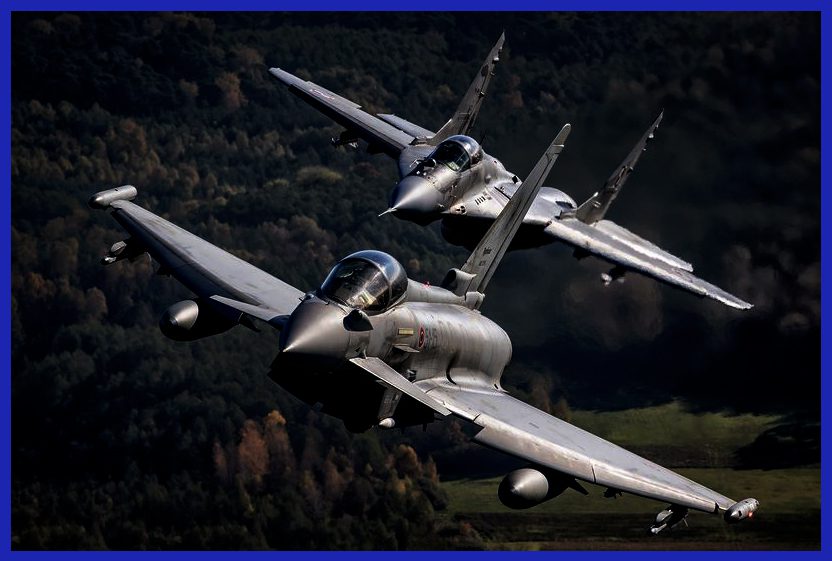
However, Mikoyan’s multirole modifications, including a carrier-based version known as the MiG-29K, were never mass-produced. But the Soviet Union did field refined versions of the MiGs with enhanced avionics. The ‘K’ type entered service aboard the Russian Navy’s Admiral Kuznetsov class aircraft carrier and the Indian Navy’s INS Vikramaditya. Moreover, Mikoyan created upgraded versions of the MiG 29M and MiG 29SMT also.
Several upgrading programs for the MiGs have been carried out. The adoption of avionics that is standard-compatible, extending service lives to 4,000 aircraft hours, improving safety, enhancing combat capabilities, and ensuring reliability are all examples of common modifications.
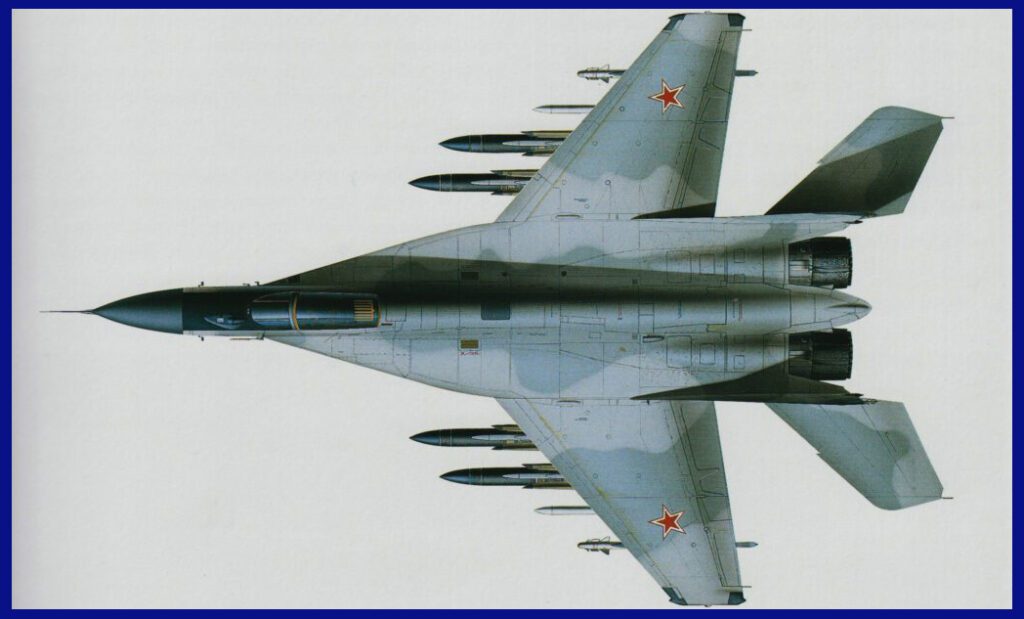
Indian Air Force MiG-29UPG
The Indian Air Force MiG-29s were slated to receive an advanced upgrade known as the UPG standard. While the SMT model and the Indian UPG version are comparable, the latter stands out for incorporating an avionics package sourced from elsewhere. The weapons suite remains the same as the SMT and K/KUB versions.
On 4 February 2011, the UPG version successfully completed its maiden flight, featuring notable enhancements such as the new Zhuk_M radar, upgraded avionics, an in-flight refuelling ( IFR ) probe, as well as the new enhanced RD-33 series 3 turbofan engines and the DRDO D-29 EWS ( Electronic Warfare System ). India entered into a $900 million contract with Russia for the upgrade of the 69 MiG-29 fighters in its fleet. The first three modified aircraft were delivered in December 2012.
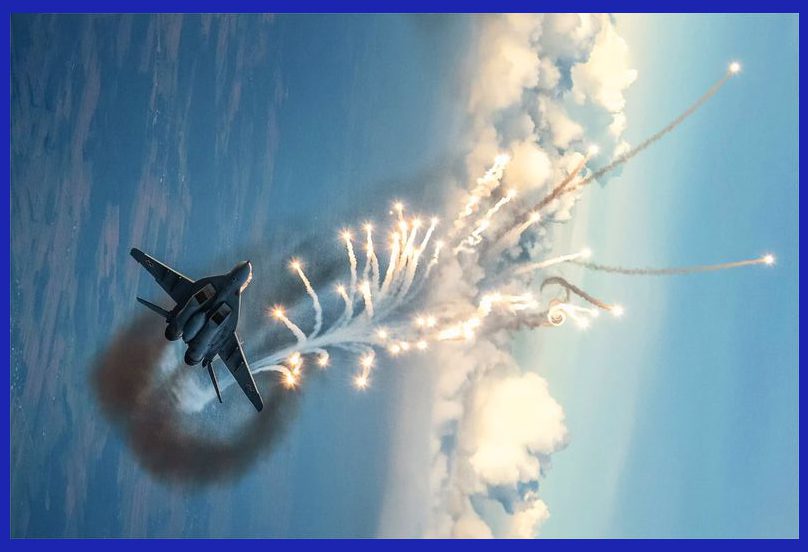
About Naval MiG-29K: In the 1980s, a carrier-compatible version of the MiG-29K underwent testing in Russia, and an improved variant was subsequently sold to the Indian Navy in the 2000s for deployment on its aircraft carriers INS Vikramaditya and INS Vikrant. It was officially commissioned into the Indian Navy on 19 February 2010, significantly bolstering its naval aviation capabilities. Through a US$1.2 billion agreement, India was designated to receive a total of 45 MiG-29K aircraft. These advanced jets were purposefully designed for carrier-based operations, aligning with India’s strategic focus on maritime defence.
The MiG-29K variant incorporates various modifications and enhancements compared to its land-based counterpart, including reinforced landing gear, folding wings, and an arrestor hook for carrier landings. With exceptional performance, state-of-the-art avionics, and versatile multi-role capabilities, the MiG-29Ks significantly enhance the Indian Navy’s operational reach, serving as a formidable asset for both air defence and offensive missions at sea.

MiG-29 ” Fulcrum ” Specifications
- Dimensions:_
- Length: 56ft 10in ( 17.32 m ) with nose probe.
- Wing Span: 37ft 3in ( 11.36 m )
- Wing Area: 409.04 sq ft ( 38 m2 )
- Height: 15ft 6in ( 4.73 m )
- Powerplant:_ 2 x Klimov RD-33 augmented turbofans each rated at 11,111 lb st ( 49.42 kN ) dry and 18,298 lb st ( 81.39 kN ) with afterburning.
- Weights:_ Empty operating 24,030 lb ( 10,900 kg ) and Maximum takeoff 40,785 lb ( 18,500 kg )
- Fuel and Load:_ Total internal fuel: 1,153 U.S gal ( 4365 lit ), External Fuel: 402 U.S gal ( 1520 lit ) and Max Weapon Load: 6,614 lb ( 3000 kg )
- Performance:_ Maximum level speed at high altitude: 1,520 mph ( 2445 km/h ) Limiting Mach number: 2.3 and 1.22 at Sea level.
- Max Service ceiling: 55,780 ft ( 17,000 m )
- Range:_ With Internal Fuel: 932 Miles ( 1500 km ) with 3 External Tanks: 1,305 miles ( 2100 km )
- Combat Range: Around 700 – 900 km
- Armaments:_ One 30mm GSh-301 Cannon in port wing root leading edge with 150 rounds. Air-to-Air missiles: R-60 ( AA-8 Aphid ), R-27 ( AA-10 Alamo ), R-73 ( AA-11 Archer ), R-77 Adder, ASTRA, 20 round 80mm Rocket pods plus different categories of conventional Bombs including one 30kt RN-40 nuclear bomb on the port inboard pylon.

Moreover, don’t miss the golden opportunity to own an exquisite and awe-inspiring scale model of the MiG-29 fighter jet, conveniently available exclusively on Air Models. Just click the provided link to access this remarkable and unparalleled aircraft. Renowned worldwide for its unparalleled and devastating capabilities in combat, it truly exemplifies the Russian military’s unwavering dedication to cutting-edge technology and precision warfare.
In conclusion, The Russian MiG-29 Fulcrum stands as an epitome of power, precision, and dominance in the skies. With its unrivalled agility, cutting-edge avionics, and lethal air-to-air capabilities, this remarkable fighter jet reigns supreme, ensuring superiority in any battle scenario. Its thunderous engines and sleek design embody a force to be reckoned with, solidifying the MiG-29 Fulcrum’s legendary status as a true icon of aerial might.
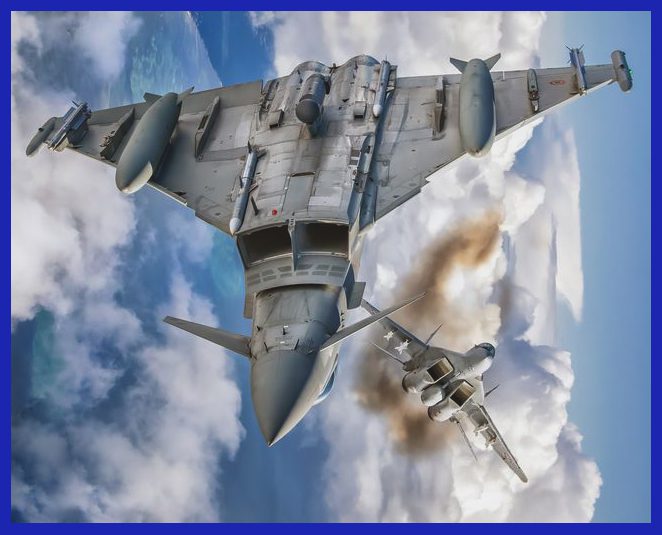
Important Announcement for Our Valued Readers!
After an article is published, it is possible that updates or changes may have occurred beyond the time of publication. Therefore, it is important to be aware that certain information in the article might be outdated. To ensure the most accurate analysis, it is highly recommended to verify the content with the latest sources available.
However, we are dedicated to delivering outstanding articles on military products and global updates. Maintaining quality and smooth operation requires resources. Your support sustains our efforts in providing insightful content. By purchasing high-quality products through our affiliated links, you help us keep our platform alive and acquire top-notch items. Your unwavering support is invaluable and inspires us to strive further.
We welcome your suggestions and requests for more information, as we value feedback from our readers. If there’s specific defence material or equipment not covered on our site, please share your request in the comments. We’ll strive to research and provide the required information. We sincerely thank you for your unwavering interest in our website, and we eagerly anticipate hearing from you! Enjoy your reading experience!

10 thoughts on “MiG-29”